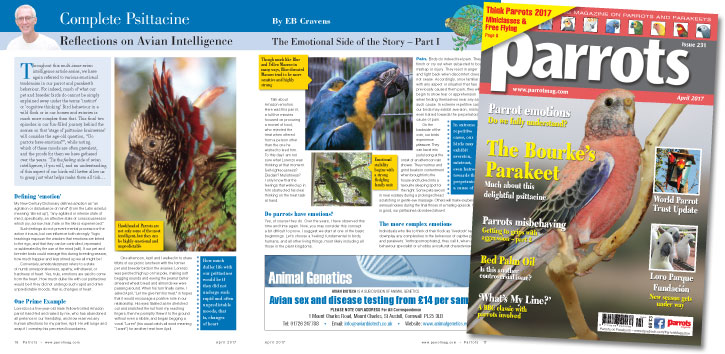
Complete Psittacine by Eb Cravens
Throughout this multi-issue avian intelligence article series, we have again referred to various emotional tendencies in our parrot and parakeet’s behaviour. For indeed, much of what our pet and breeder birds do cannot be simply explained away under the terms ‘instinct’ or ‘cognitive thinking’ Bird behaviour in a wild flock or in our homes and aviaries is much more complex than that. This final two episodes in our fun-filled journey behind the scenes on that ‘stage of psittacine brainwaves’ will consider the age-old question, “Do parrots have emotions?”, while noting which of these moods are often prevalent, and the proofs for them we have gathered over the years. ‘Tis the feeling side of avian intelligence, if you will, and an understanding of this aspect of our birds will better allow us to grasp just what helps make them all tick…
My New Century Dictionary defines emotion as “an agitation or disturbance of mind” (from the Latin emotus meaning ‘stirred up’), “any agitated or intense state of mind, specifically, an affective state of consciousness in which joy, sorrow, fear, hate or the like is experienced.”
Such feelings do not prevent mental process nor the action it incurs, but can influence both strongly. Yogic teachings espouse the wisdom that emotions are linked to the ego, and that they can be controlled, repressed or sublimated by the use of the mind (will). If our pet and breeder birds could manage this during breeding season, how much happier and less stirred up we all might be!
Conversely, emotionlessness refers to a state of numb unresponsiveness, apathy, withdrawal, or hardness of heart. Yes, truly, emotions are said to come from the heart. How much duller life with our psittacines would be if they did not undergo such rapid and often unpredictable moods, that is, changes of heart.
Buy Now!
